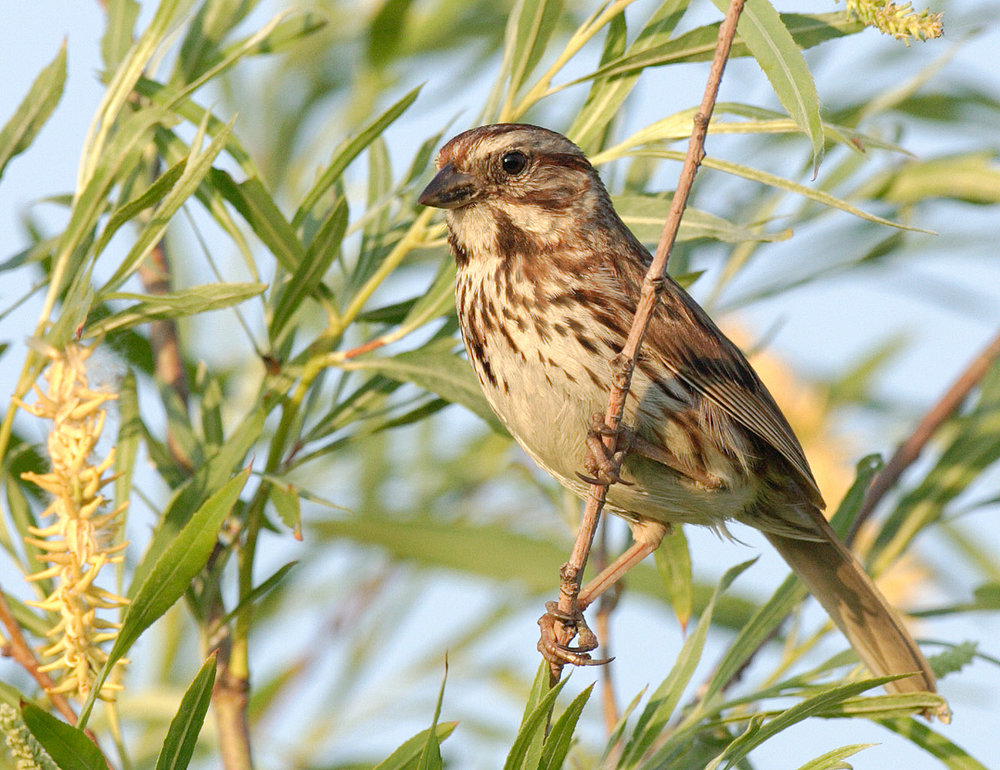How biological magnification changed song of passerines

Polychlorinated biphenyls (PCBs) are synthetic chemical pollutions with demonstrated toxic and developmental effects on humans and wildlife.
Polychlorinated biphenyls (PCBs) are synthetic chemical pollutions with demonstrated toxic and developmental effects on humans and wildlife.
Biological magnification of PCBs in an aquatic food chain is undeniable. Most of the 209 different PCBs are insoluble in water, soluble in fats, and resistant to biological and chemical degradation-properties that result in their accumulation in the tissues of organisms and their biological amplification in food chains and webs. Although the long-term health effects on people exposed to low levels of PCBs are unknown, high doses of PCBs in laboratory animals produce liver and kidney damage, gastric disorders, birth defects, skin lesions, hormonal changes and tumors.
Laboratory studies suggest that PCBs influence behavior due to their effects on endocrine and neurological systems, yet little is known about the behavioral consequences of sublethal PCB exposure in the field. Additionally, specific PCB congener data (in contrast to total PCB load) is necessary to understand the possible effects of PCBs in living organisms since number and position of chlorine substitution in a PCB molecule dictates the toxicity and chemical fate of individual PCB congeners. Dr. Sara DeLeon and her colleagues investigated on non-lethally total PCB loads, congener specific PCB profiles, and songs of black-capped chickadees (Poecile atricapillus) and song sparrows (Melospiza melodia) along a historical PCB gradient at the Hudson River in New York State.
In a rare interview Dr. DeLeon explains their studies’ results for Tehran Times:
Q: Why did this research focus on the black-capped chickadee and song sparrow? And why didn’t you choose a vulnerable or endangered species such as the bald eagle or heron?
A: The black-capped chickadee and song sparrow are common passerines in the area where the research was conducted. This was important since the study required the comparison of individuals of the same species from different locations, and not all bird species have ranges that cover all of the study areas. In addition, the study species needed to have well-studied songs. Both the black-capped chickadee and the song sparrow have well-studied songs. Although chemical pollution is likely in many other species, including large piscivorous birds, these birds do not learn their song, and are harder to target for behavioral studies.
Q: How could you measure PCBs in protected and endangered species?
A: Measuring PCBs in protected and endangered species is challenging. In larger organisms they can be measured by taking blood or feathers/hair, without doing harm to the individual. This does not work in smaller organisms. Often individuals are sacrificed, or, in the case of birds, PCB levels are often measure in eggs.
Q: As you mentioned in your article, PCB exposure has been shown to cause a decrease in volume of the robust nucleus of the arcopallium in avian brains. Can a similar effect be expected in mammal’s brains, for example, on the amygdala?
A: I don’t know. Presumably, areas of the brain with hormone receptors may all be influenced by PCB exposure.
Q: Can you explain more about the burgeoning techniques to measure PCB loads in small amount of wildlife blood, feather, or hair samples?
A: We are really pleased with the results of this portion of the study. Although this method was theoretically possible, it is a challenging procedure, and was modified from previously published studies to use a GCMS system that was in a chemical ecology lab that focused on plant-insect interactions. Also, it was successful with very small volumes of serum, which allowed us to not kill the individual birds.
Q: What about song analysis methods and limitations.
A: The differences in songs that we discovered, were unable to hear with our ears. Therefore, the use of song analysis software, specifically RavenPro, was essential for this study. The visualization of the songs of individuals allowed us to make the needed measurements.
Q: What are the bioaccumulation differences between black-capped chickadees and song sparrows?
Black-capped chickadees and song sparrows occur in the same regions, but have different microhabitats, foraging preferences, and life histories. Black-capped chickadees do not migrate, forage higher in the canopy, and tend to nest further from the water. Song sparrows often forage directly adjacent to water, migrate, and have nesting territories closer to the water as well.
Q: Finding a large number of pollutants in a region is normal. How could scientists select the most important/highlighted ones? Which factors must be noticed?
A: Often in areas of high chemical concentrations, the synergistic effect of the chemicals is more problematic than their effects singly. In areas where this is a problem, scientists still struggle with how to determine which chemicals are causing the problems, and how to clean up the area. I think this a very real problem, and the complicated decisions made to address these problem areas often are unique to the situation.
Leave a Comment